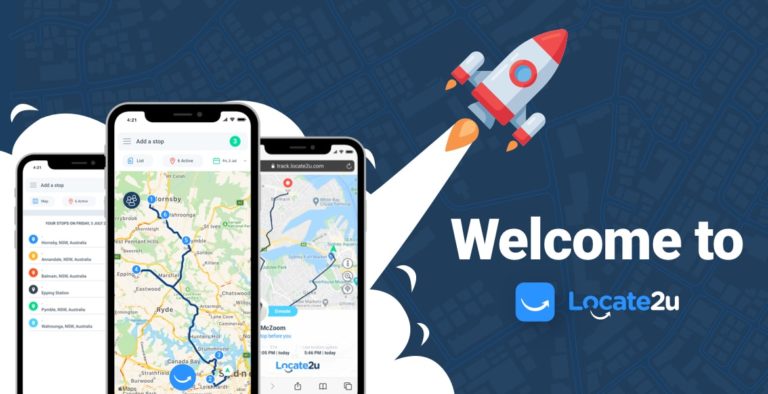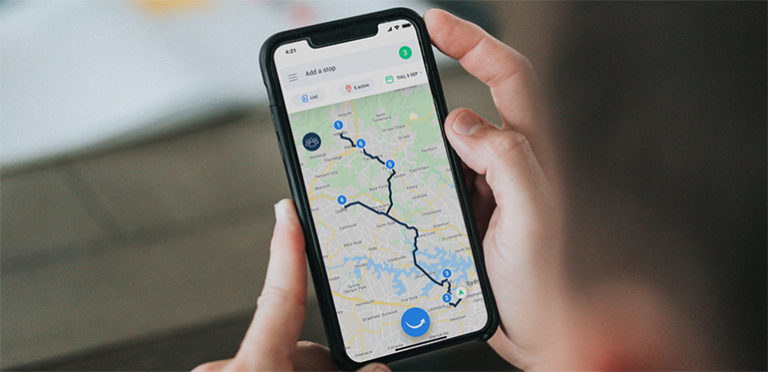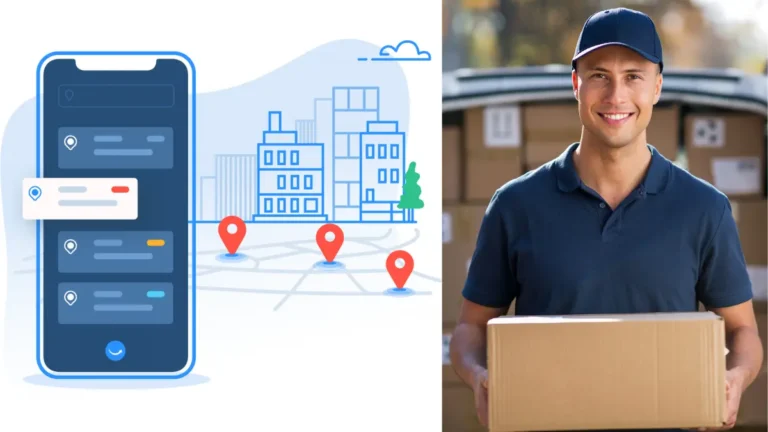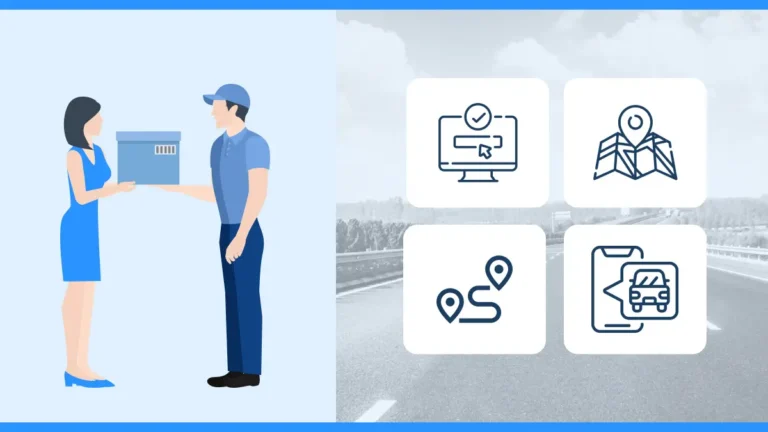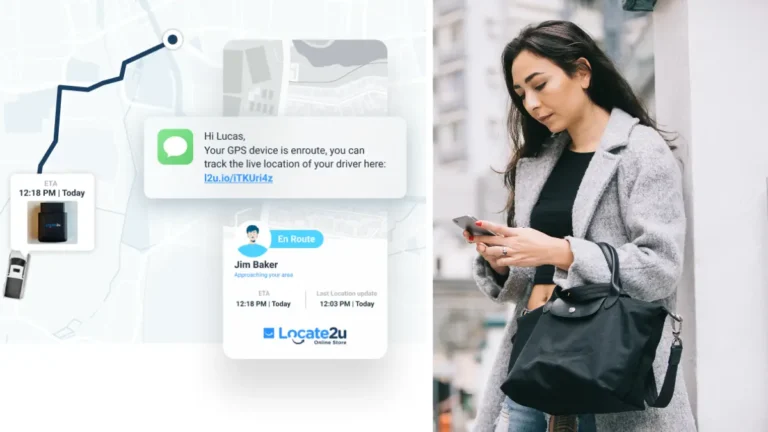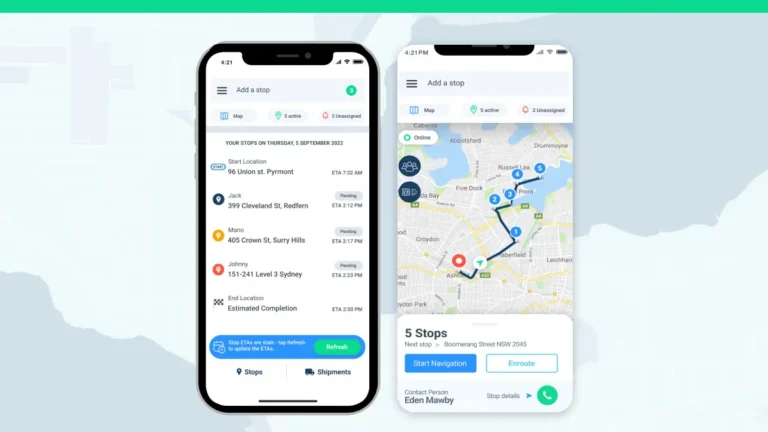To enhance delivery speed, retail giant Amazon uses GPS tracking software for speed and accuracy. “The faster we can get products to customers, the more likely they are to buy them,” reveals Amazon Stores’ Doug Herrington as the golden rule.
Amazon uses GPS tracking for almost everything.
- Tracking items in warehouses.
- Helping employees find packages.
- Optimizing routes.
When the delivery process is more easily monitored with accurate GPS tracking, deliveries leave the warehouses faster, and drivers arrive at the delivery address faster.
Accuracy and exceptional delivery service are the order of the day.
A study recently revealed that precise deliveries are more critical than before. 68% of shoppers consider shorter delivery windows at checkout as a persuading factor in their purchasing decision. “To improve speed at an affordable rate, retailers and brands are increasingly looking to improve delivery economics,” reads the report.
In this article, you’ll find out how GPS tracking systems can elevate speed by avoiding idle time and cluttered routes and minimizing downtime.
You’ll also learn how GPS tracking devices can improve the accuracy rate of your deliveries.
What is GPS tracking software?
GPS tracking software is a tool that uses Global Positioning System (GPS) technology to monitor the real-time location of vehicles, assets, or individuals.
It collects data from devices, such as car plug-ins or cell phones. The data can be viewed on a map or dashboard on a desktop or mobile device.
The software helps managers improve route planning, make better decisions about training, and ensure accurate deliveries.
GPS tracking systems also offer data analytics and automated reports to save time in making better business decisions impacting the fleet, delivery drivers and customers.

How GPS Tracking System Enhances Delivery Speed
You want to achieve three main goals to increase your delivery speed, and all three are with the help of GPS tracking devices.
- Minimize downtime and unproductive drivers
- Optimized routes
- Faster dispatching
How will you achieve this? Let’s break it down.
1. Minimized Downtime with Predictive Alerts
GPS tracking software can send out alerts to dispatchers to warn about upcoming bottlenecks on the road as drivers head into the red zone. It can prevent delays, which can have a ripple effect on the rest of the day’s deliveries.
Knowing exactly where fleet truck delivery drivers are, dispatchers can recall drivers from a certain route or instruct another to pick up a new parcel at a nearby warehouse.
By using a GPS tracking system, it reduces the likelihood of late deliveries caused by unforeseen circumstances.

2. Real-Time Route Optimization With GPS Tracking Devices
One of the standout features of GPS tracking software is its ability to calculate the fastest and most efficient routes in real-time.
Imagine having to drive through an area where there is construction underway. Usually drivers would avoid this area knowing they can get stuck there for an unreasonable time.
But on this particular day, there is an accident on the route that is usually the more effective route.
With route optimization that gets updated in real time, on this specific day, drivers will be able to take the route through the construction area, which happens to have no traffic at all.
Route optimization is only possible with GPS tracking capabilities. The GPS tracking system uses live traffic updates to identify the quickest path.
Without knowing where the drivers are (with a GPS tracking system) there would be no vehicle tracking or instant notifications to improve delivery speed.
WATCH: How does route optimization work?
3. Faster Dispatch Coordination
GPS tracking solutions make it easier for dispatchers to track where drivers are. This information is vital as deliveries and orders can change at any minute.
Scenario: There is a new order coming in that requires urgent dispatch and same day delivery. With a GPS tracking device in vehicles, managers can log in to the GPS tracking dashboard and have full access to where the fleet of vehicles is.
This way a driver can easily be re-routed if need be. That means faster turnaround time for deliveries.

How Can GPS Tracking Software Improve Delivery Accuracy?
When it comes to accurate delivery, three things come to mind.
4. Precision of the address.
5. Proof of delivery (PoD).
6. No human error.
4. Precision Of Address
Many deliveries don’t make it to their intended destination due to an incorrect address, resulting in an attempted delivery.
The point of having GPS devices is to pinpoint coordinates and identify exactly the correct drop-off location. There is no need to rely on manual directions, and drivers don’t have to guess where the entrance of a complex is, wasting precious time.
Scenario: You are a delivery driver with the last package in the van being dropped off in a densely populated area. You drive to the address provided just to find a random tree and a rock.
Not knowing what to do, you call your manager. The manager then spends half an hour on the phone trying to get the new information from the customer.
However, the customer doesn’t answer the phone, and you end up leaving the area with the parcel. The next day you are sent to the same area for re-delivery.
ALSO READ: 5 Essential Benefits of GPS Fleet Tracking for Managers
5. Proof of Delivery (PoD) helps with accuracy
Electronic proof of delivery is when a signature is captured by the customer, confirming that the parcel has been delivered successfully. This is a crucial leg of the delivery process, helping to minimize disputes and failed deliveries.
Accuracy in the delivery process is important, and PoD helps protect the business and the driver from future disputes.
With a GPS tracking device, a driver can log the exact time and location of each delivery, which is referenced on the PoD form.
Proof of delivery is provided through geotags and timestamps and this data helps to improve accuracy.
WATCH: How to set up PoD
6. Reduced Human Error
Manual inputs of addresses on the dispatch and delivery dashboard are prone to human error and a mistake can easily slip in.
GPS trackers automate delivery navigation and reduce reliance on manual inputs.
With a tracking system, drivers know exactly which directions to follow, turn-by-turn. GPS devices help to take the guessing out of the delivery process. With first-time delivery success, businesses save money and resources by decreasing the likelihood of a missed delivery.
The Synergy of Speed and Accuracy
GPS trackers create a perfect synergy of speed and accuracy, which ultimately impacts customer satisfaction.
Customers receive live updates on the progress of their deliveries. With an accurate estimated time of arrival, customers are less frustrated.
A tracking system allows businesses to set themselves apart by consistently delivering on their promises.
NOW READ: Comparing GPS Fleet Tracking: Which Features Matter Most?
About the author
Mia is a multi-award-winning journalist. She has more than 14 years of experience in mainstream media. She's covered many historic moments that happened in Africa and internationally. She has a strong focus on human interest stories, to bring her readers and viewers closer to the topics at hand.


